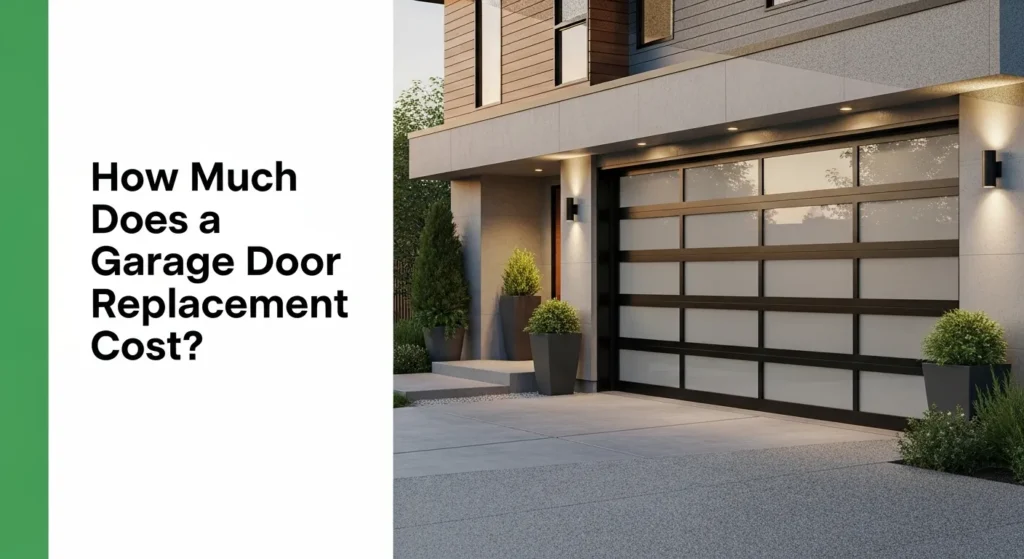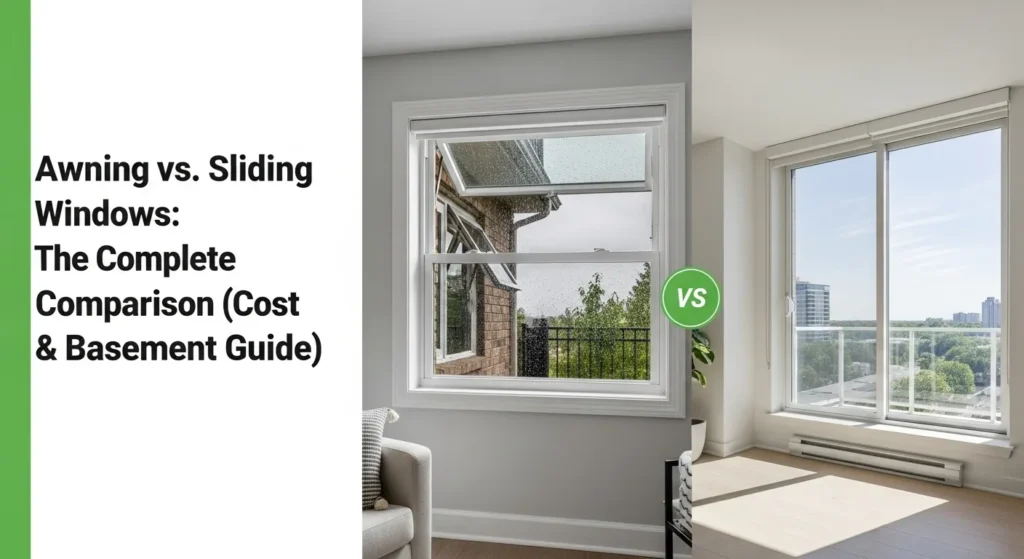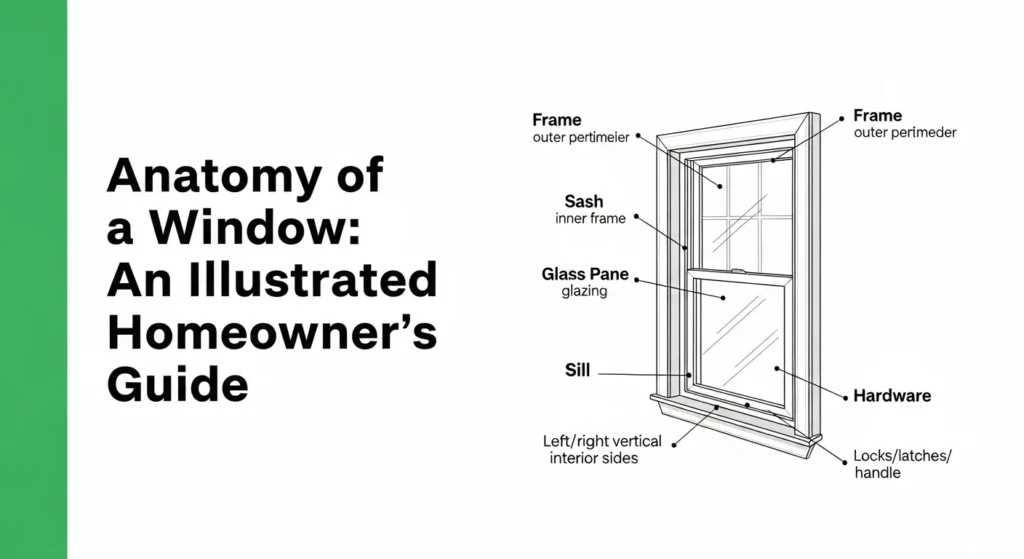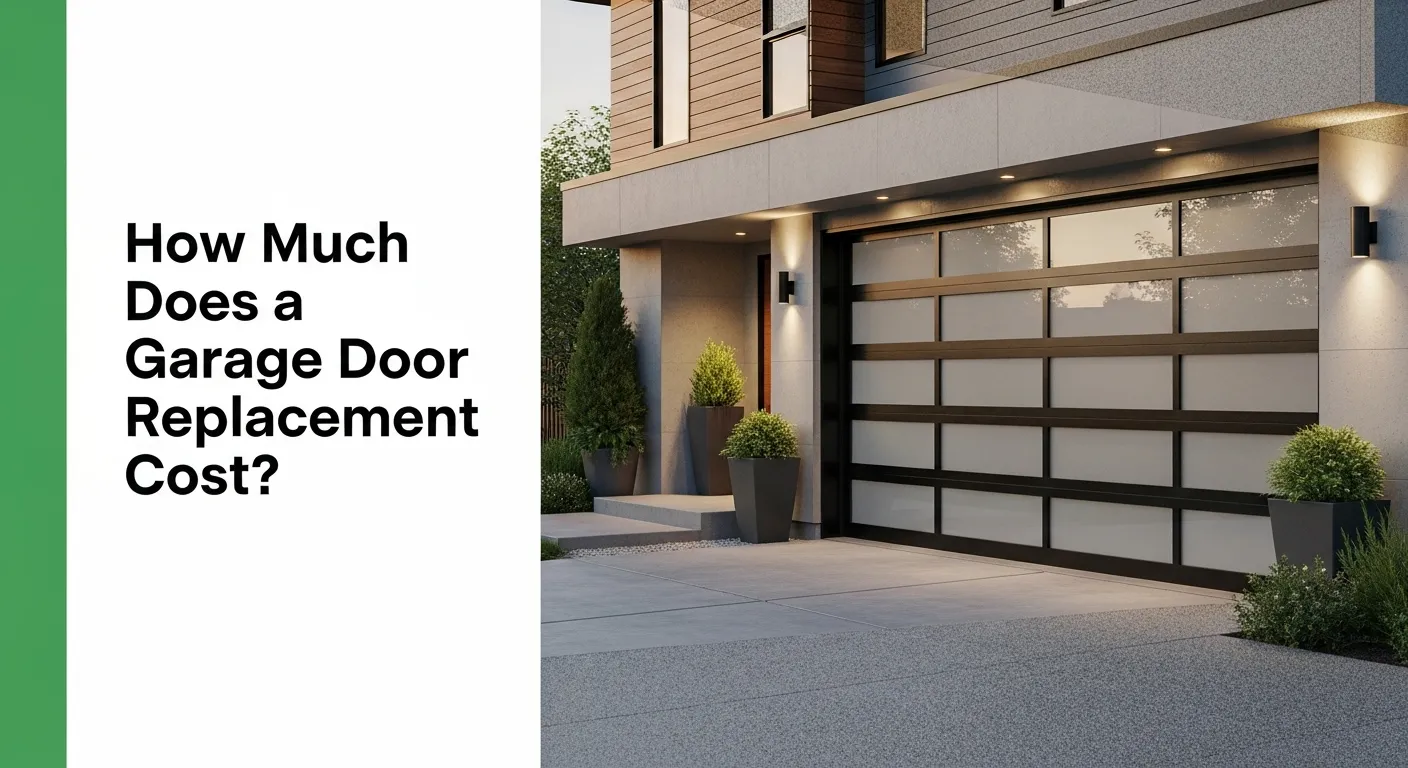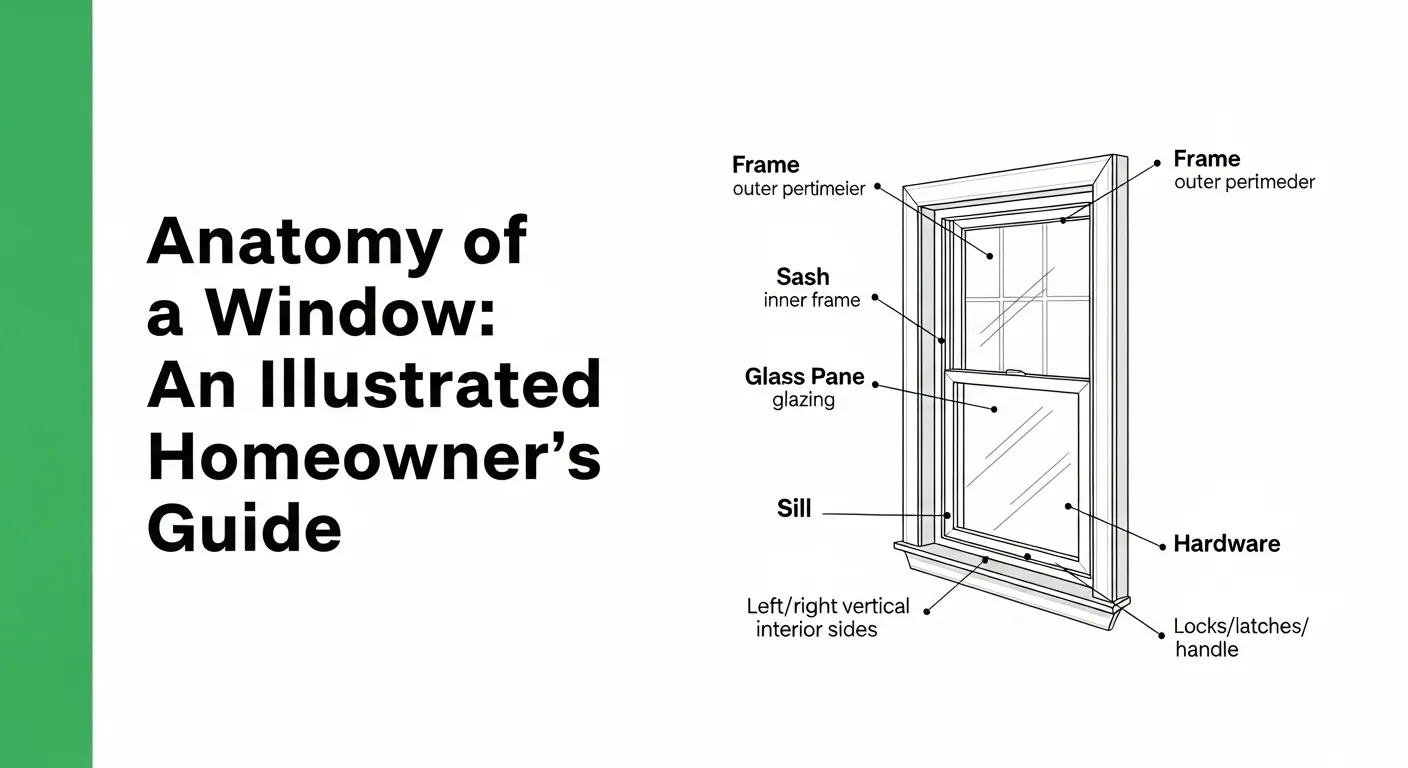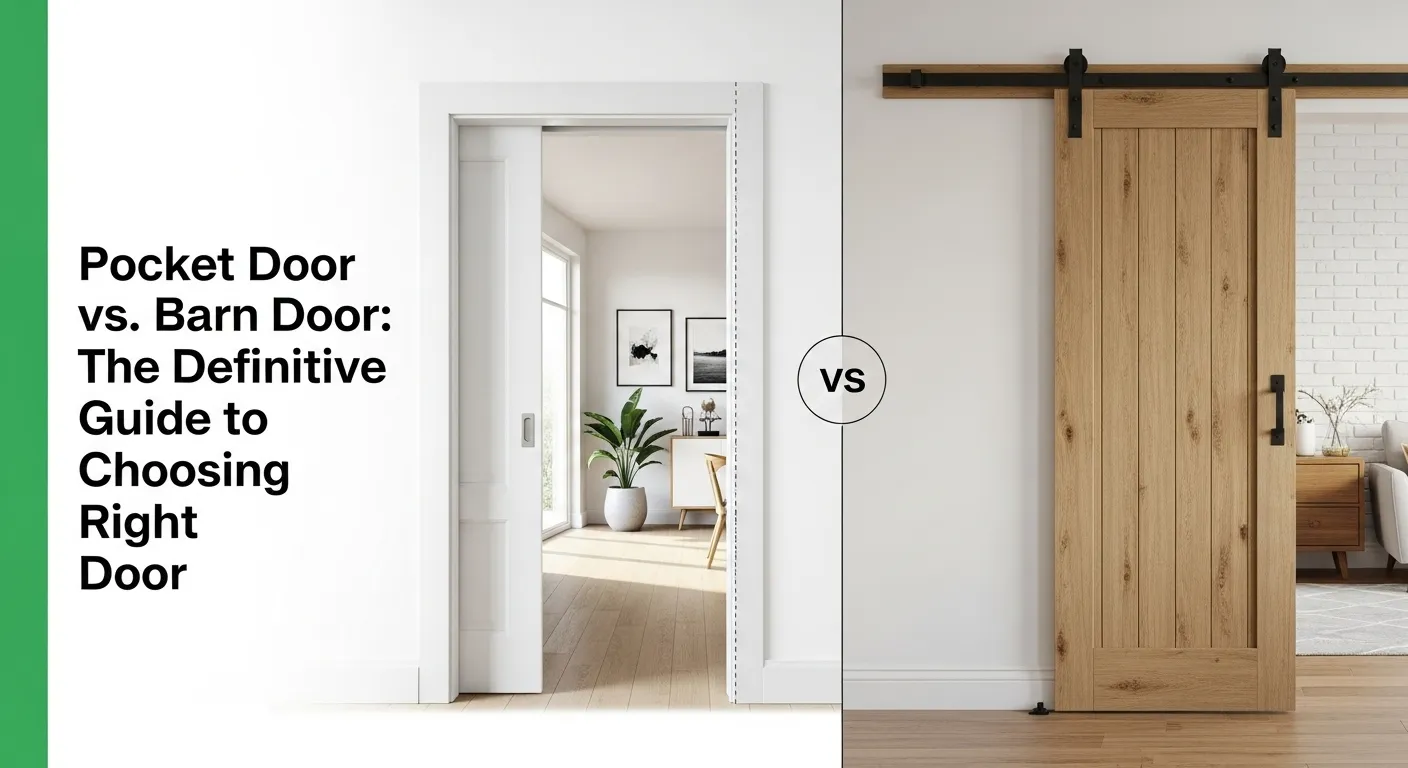The standard garage door size for a 2-car garage is 16 feet wide by 7 feet tall (16’×7′). For single-car garages, the standard is 9 feet wide by 7 feet tall (9’×7′).
However, modern vehicles—especially trucks, SUVs, and crossovers—are wider, taller, and longer than the cars these standards were designed for decades ago. Today, many homeowners need 8-foot-tall doors or 18-foot-wide openings to comfortably fit two vehicles.
This comprehensive guide provides precise dimensions for every scenario: single-car, 2-car, trucks, RVs, workshops, and custom builds. You’ll learn how to measure your garage, avoid costly sizing mistakes, and choose the right door for your vehicles and lifestyle.
Custom garage doors made just for you — stylish, secure, and built to last.
Design Yours TodayStandard Garage Door Size Chart
Residential garage doors follow industry-standard dimensions, but your ideal size depends on vehicle type, garage layout, and future needs.
Residential Garage Door Size Chart (in Feet)
Single-Car Garage Doors
| Width (ft) | Height (ft) | Ideal For |
|---|---|---|
| 8×7 | 7 | Compact cars, older homes, golf carts |
| 9×7 | 7 | Standard single-car (sedans, compact SUVs) |
| 10×7 | 7 | Full-size sedans, mid-size SUVs, extra maneuvering room |
| 9×8 | 8 | Trucks, lifted vehicles, rooftop cargo |
| 10×8 | 8 | Large trucks, SUVs with antennas/racks |
Double-Car Garage Doors
| Width (ft) | Height (ft) | Ideal For |
|---|---|---|
| 16×7 | 7 | Standard 2-car (two compact to mid-size vehicles) |
| 18×7 | 7 | Two full-size sedans/SUVs with better clearance |
| 16×8 | 8 | Two trucks or SUVs (recommended for modern vehicles) |
| 18×8 | 8 | Two large trucks/SUVs with rooftop equipment |
| 20×7 | 7 | Two vehicles with extra storage/workspace |
| 20×8 | 8 | Maximum residential width for large vehicles |
Notes:
- Heights also available: 6’6″ (rare, older homes) and custom heights up to 16 feet for RVs and commercial use.
- Widths are available in 1-foot increments; heights typically in 6-inch increments.
- For style options that fit your home’s architecture, see garage door styles.
What Garage Door Size Do I Need for 2 Cars?
For two modern vehicles, a 16×8-foot or 18×7-foot door is recommended over the standard 16×7 to prevent mirror strikes and provide comfortable clearance.
Why the Standard 16×7 May Be Too Small
- The standard 16-foot width was designed when vehicles averaged 6 feet wide.
- Modern SUVs and trucks range from 6.5 to 7 feet wide (mirrors included).
- Two vehicles in a 16-foot opening leave only 1–2 feet of clearance between mirrors—tight for daily parking.
- Recommendation: An 18-foot-wide door provides an extra foot on each side for easier entry and reduces door dings.
When to Choose 16×8 Over 16×7
- If garage width is limited but you have vertical clearance, an 8-foot-tall door accommodates:
- Pickup trucks (average height: 6’2″–6’9″ without modifications)
- SUVs with roof racks, antennas, or cargo carriers
- Lifted or taller vehicles
- 16×8 is the sweet spot for two modern trucks or SUVs when 18-foot width isn’t possible.
Alternative: Two Separate Single Doors
- Instead of one double door, install two 9×7 or 9×8 single doors side-by-side.
- Pros: Individual access; one can be manual/insulated differently; classic aesthetic.
- Cons: Higher cost (two openers, two doors), center post reduces usable width.
For sizing other types of doors, compare with bifold door sizes and front door sizes to understand residential door standards.
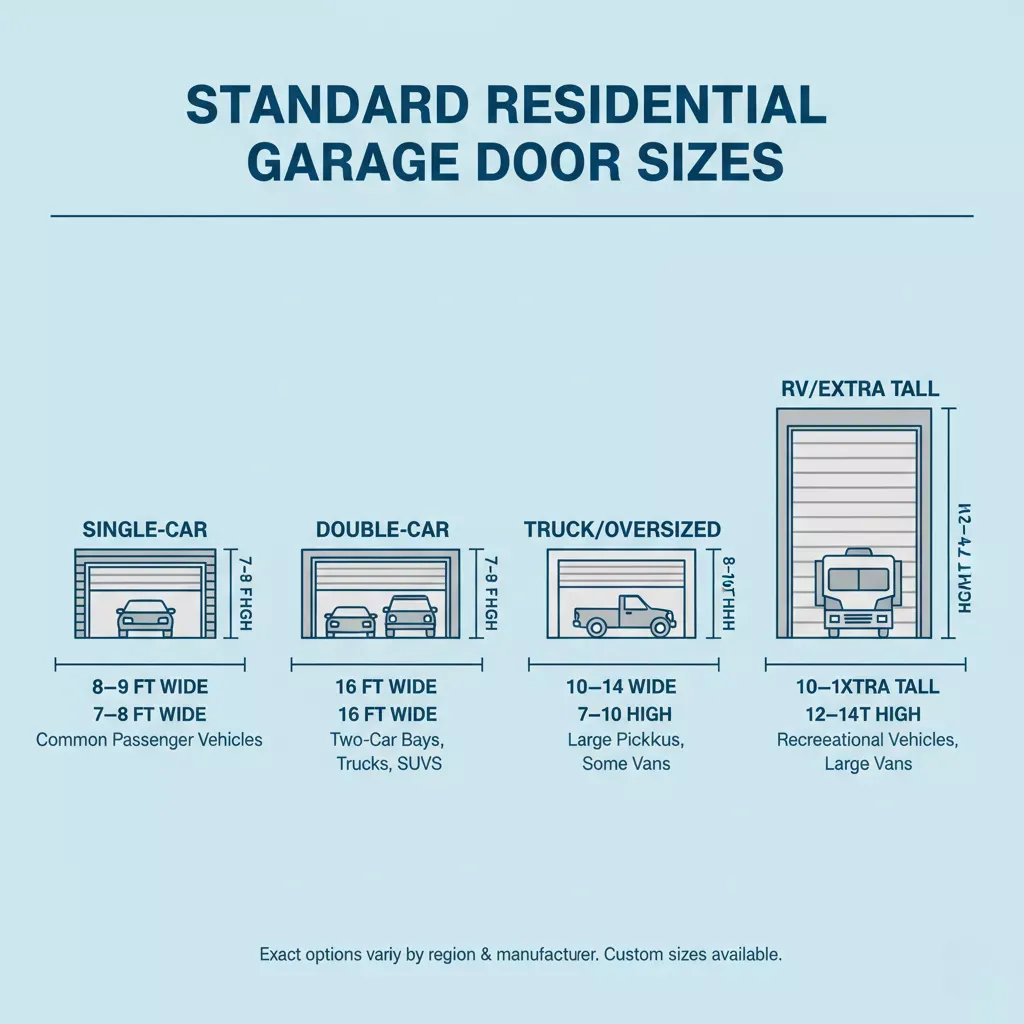
Sizing for Your Specific Vehicle: Trucks, SUVs, and RVs
Measure your vehicle’s height (including roof accessories) and width (including mirrors) before ordering; add at least 12 inches clearance on all sides.
What Garage Door Size for Trucks and SUVs?
- For most pickup trucks and large SUVs, an 8-foot-tall garage door is highly recommended.
- Common pickup truck heights (stock):
- Mid-size trucks (Toyota Tacoma, Chevy Colorado): 5’10″–6’2″
- Full-size trucks (Ford F-150, Ram 1500): 6’3″–6’9″
- Heavy-duty trucks (F-250, Silverado 2500): 6’6″–6’10”
- Add 6–12 inches for:
- CB or AM/FM antennas (especially on trucks)
- Roof racks, crossbars, kayak/bike mounts
- Tonneau covers or bed caps
- Lift kits (add 2″–6″ or more)
Expert Tip: A 7-foot door provides only 84 inches of clearance, which is marginal for many stock trucks. An 8-foot door (96 inches) future-proofs your garage for vehicle changes and accessories.
How Tall of a Garage Door for an RV or Camper?
- Typical RV garage door dimensions: 12–14 feet wide by 14–16 feet tall.
- RV height varies dramatically by class:
- Class B (camper vans): 9–11 feet tall
- Class C (motorhomes): 11–13 feet tall
- Class A (large motorhomes): 12–13+ feet tall
- Travel trailers (on hitch): 10–12 feet tall
- Fifth wheels: 12–13+ feet tall
- Critical: Measure with rooftop air conditioning units, antennas, and solar panels in place—these add 12–18 inches.
- Width: Most RVs are 8–8.5 feet wide; 12-foot-wide doors are minimum, and 14 feet is ideal.
- Recommendation: For an RV bay, order 14 feet wide × 14 feet tall minimum, with 16-foot height if your RV exceeds 13 feet.

How to Measure Your Garage: A 5-Step Guide
Accurate measurement of opening width, height, headroom, sideroom, and backroom ensures proper door fit and opener installation.

Step 1: Measure Opening Width and Height
- Width: Measure the inside width of the opening at the widest point (usually at the bottom). Measure in three places (top, middle, and bottom) and use the smallest measurement to ensure the door fits.
- Height: Measure from the floor to the bottom of the header (top of the opening) on both sides. Use the smallest measurement.
- Standard openings are sized to match standard door dimensions (9′, 16′, 18′, etc.).
Step 2: Measure Sideroom (Side Clearance)
- Sideroom is the horizontal space from the edge of the opening to the nearest wall or obstruction on each side.
- Standard requirement: Minimum 3.75–4 inches per side for standard track hardware.
- Low-headroom or custom installations may require more sideroom (up to 12 inches for some commercial systems).
Step 3: Measure Headroom (Clearance Above the Door)
- Headroom is the vertical space from the top of the opening to the ceiling or lowest obstruction (joists, light fixtures, pipes).
- Standard requirement: Minimum 12 inches for standard lift hardware.
- Taller doors (8+ feet) and opener installations may require 15–18 inches or more.
- Low-headroom kits are available for garages with limited clearance (as low as 4.5 inches).
Step 4: Measure Backroom (Garage Depth)
- Backroom is the distance from the garage door opening to the back wall of the garage.
- Standard requirement: Door height + 18–24 inches minimum for horizontal track and opener arm clearance.
- For an 8-foot door, you need at least 10–11 feet of depth.
Step 5: Check for Obstructions
- Inspect for obstructions that may interfere with door operation or tracks:
- Light fixtures, electrical boxes, water heaters
- HVAC ducts, pipes, structural beams
- Windows, electrical outlets, junction boxes
- Obstructions may require custom track configurations or relocations.
Pro tip: Take photos of your garage interior and bring measurements to your installer or supplier for verification. Compare your space requirements with other door types using our standard door size guide.
Specialty & Custom Garage Door Sizes
Workshops, commercial bays, and non-standard applications require larger or custom-sized doors beyond typical residential dimensions.
What Garage Door Size for a Workshop or Shop?
- Common workshop/shop door sizes: 10×10, 12×12, 14×12, or 16×12 feet.
- Why larger?
- Moving large equipment (tractors, mowers, ATVs, motorcycles)
- Project cars, classic car restoration
- Material delivery (lumber, sheet goods, machinery)
- Workshop flexibility for future tools or vehicles
- 10×10-foot doors are popular for smaller workshops and provide square proportions.
- 12×12 or 14×12 doors accommodate full-size trucks with trailers or equipment.
For folding access solutions, explore sliding vs. folding doors for workshop applications.
What is the largest residential garage door width?
- Residential garage doors typically max out at 20 feet wide for standard residential hardware.
- Doors wider than 20 feet are available but considered commercial-grade and require:
- Heavier-duty track, springs, and operator systems
- Structural support (reinforced headers, support beams)
- Often wind-rated for commercial building codes
- Commercial/semi-truck doors are commonly 14 feet wide × 14 feet tall or larger (up to 32+ feet for aircraft hangars).
Expert insight: For doors 18+ feet wide, consider upgrading to steel or aluminum construction for durability. Learn more at Aluminum vs. Steel Garage Doors: Which Is Best for You?
Important Related Questions
Door size affects price, installation complexity, and opener requirements—plan accordingly to avoid surprises.
How Does Size Affect Garage Door Prices?
- Larger doors cost more, but not proportionally—a double door is not simply twice the cost of a single.
- Price factors:
- Size: 16×7 door typically costs 1.5–1.8× more than a 9×7 door of the same style.
- Height: 8-foot-tall doors cost 10–20% more than 7-foot doors.
- Material: Steel is most affordable; wood and custom aluminum cost significantly more.
- Insulation: R-value, windows, and hardware upgrades add cost.
- Typical price ranges (installed):
- Single 9×7: $800–$2,500
- Double 16×7: $1,200–$4,000
- Double 16×8 or 18×8: $1,500–$5,000+
- RV 14×14: $3,500–$8,000+
- Custom/luxury: $5,000–$15,000+
Explore trusted suppliers: 15 Best Garage Door Manufacturers 2025.
What Size Garage Door Opener Do I Need?
- Opener horsepower (HP) depends on door size, weight, and material.
- Standard recommendations:
- 1/3 HP: Single-car doors up to 10 feet wide, lightweight (steel, no insulation).
- 1/2 HP: Standard single and double doors (9×7, 16×7), insulated steel, aluminum.
- 3/4 HP: Doors over 14 feet wide, 8+ feet tall, or heavy materials (wood, insulated).
- 1+ HP: Commercial doors, RV doors, or doors over 18 feet wide.
Expert Tip: For any door over 14 feet wide or 8 feet tall, we recommend a 3/4 horsepower (HP) opener instead of the standard 1/2 HP for longevity, quieter operation, and reliable performance, especially in cold climates where track friction increases.
- Modern opener features: Wi-Fi connectivity, battery backup, rolling codes, and soft start/stop.
Frequently Asked Questions (FAQs)
What is the standard garage door size for a 2-car garage?
How wide should a garage door be for two cars?
What size garage door do I need for a pickup truck?
How tall should a garage door be for an RV?
Can I replace a 16×7 door with an 18×7 door?
What is the smallest garage door size?
Do I need a taller garage door for a lifted truck?
Conclusion: Choose the Right Size for Today and Tomorrow
The standard 16×7 door fits two compact cars, but 16×8 or 18×7 is better for modern SUVs and trucks.
Always choose an 8-foot-tall door for pickup trucks, lifted vehicles, or roof-mounted accessories.
Measure your vehicle and garage five times before ordering—include all obstructions and clearances.
For RVs, workshops, and specialty vehicles, custom sizing is often necessary and worth the investment.
Ready to find the perfect door? Choose a size and style that fits your vehicles today and accommodates future needs.
- Custom Garage Doors: Find the Perfect Size and Style for Your Home. Explore Our Garage Door Collections.
- Learn more: Garage Door Styles • Aluminum vs. Steel Garage Doors
